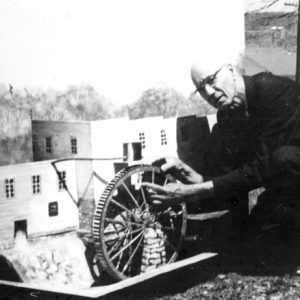calsfoundation@cals.org
Viola (Fulton County)
| Latitude and Longitude: | 36°23’48″N 091°58’58″W |
| Elevation: | 853 feet |
| Area: | 1.57 square miles (2020 Census) |
| Population: | 358 (2020 Census) |
| Incorporation Date: | July 6, 1941 |
Historical Population as per the U.S. Census:
|
1810 |
1820 |
1830 |
1840 |
1850 |
1860 |
1870 |
1880 |
1890 |
1900 |
|
– |
– |
– |
– |
– |
– |
– |
– |
– |
– |
|
1910 |
1920 |
1930 |
1940 |
1950 |
1960 |
1970 |
1980 |
1990 |
2000 |
|
– |
– |
– |
– |
206 |
196 |
360 |
362 |
320 |
381 |
|
2010 |
2020 |
|
|
|
|
|
|
|
|
|
337 |
358 |
|
|
|
|
|
|
|
|
Viola is in western Fulton County, located on U.S. Highway 62, a few miles south of the Missouri state line. Established shortly before the outbreak of the Civil War, the town has survived largely due to its schools.
For centuries, people from the north have visited Arkansas for its hunting and fishing opportunities. The Osage were engaged in those activities at the time of the Louisiana Purchase in 1803. A series of treaties between 1808 and 1825 moved the Osage to the west, opening the lands of northern Arkansas for Euro-American settlement. Even so, settlers were slow to come to the land that would become Viola; the first reported white settler was William Cook, who established his homestead in 1846. Land patents were issued from 1857 to 1861 to settlers John Bullion, Eli Pogue, William Marlow, Isaac Towell, and Henry W. Cook. Newton Barker arrived at about the same time; he was named postmaster when a post office was established in 1860. Barker had come from Viola, Kentucky, and he named the post office for his hometown. Because he also named his daughter Viola, many people assumed that the post office was named for her.
After the Civil War, Joe and James Wiseman opened a store in Viola. A log schoolhouse was built around 1872. A Methodist church was established in 1874, followed by a Community church and a Baptist church (both opening in 1884). By the time of the Goodspeed local-history accounts of 1889, Viola had two general stores, a drugstore, a flour mill, two cotton gins, blacksmith shops, a school, and a Masonic lodge. A Church of Christ was started in 1890. A high school was established in 1891, and a sawmill had been built by the start of the twentieth century.
By 1905, the public school had outgrown its building and was meeting in the Methodist church. Around 1909, a new schoolhouse had been built, which was also used as a teacher training academy. Viola’s first bank opened in 1913. An Assembly of God began meeting in Viola around 1917. Five newspapers were published in Viola between 1884 and 1920, but none of them lasted more than two years.
The Bank of Viola closed in 1928, to be replaced in the following year by the Viola State Bank. That bank closed in 1934. U.S. Highway 62, which stretches from El Paso, Texas, to Niagara Falls, New York, was built during the 1920s and was improved by federal programs such as the Works Progress Administration (WPA) during the 1930s. Several rural school districts were consolidated into the Viola School District during these years. Viola remained an unincorporated community until 1941.
The town of Viola survived the Depression and continued to thrive, both because of its location on the highway and because of its schools. Banking returned in 1982 with the opening of a branch of the Bank of Salem. Businesses in Viola in the twenty-first century included automotive services, real estate services, a photography studio, a quarry, and a general store. There is also a public library. About a half-dozen churches are in the town of Viola, with several other rural churches in the western part of Fulton County. During the 2013–14 school year, the Viola school district enrolled about 400 students. A former Boy Scout camp south of Viola, Camp Cedar Valley, is privately owned and available for rental.
Baseball great Preacher Roe grew up in Viola, although he was born in Ash Flat (Sharp County). Artist M. E. Oliver also lived several years in Viola.
For additional information:
History and Families, Fulton County, Arkansas. Morley, MO: Acclaim Press, 2008.
“History of Viola School.” Special issue, Fulton County Chronicles 8 (Fall 1993).
Viola School District. http://violaschool.k12.ar.us/ (accessed September 30, 2022).
Steven Teske
Butler Center for Arkansas Studies
 Fulton County Map
Fulton County Map  M. E. Oliver
M. E. Oliver  "Preacher" Roe
"Preacher" Roe 




Comments
No comments on this entry yet.